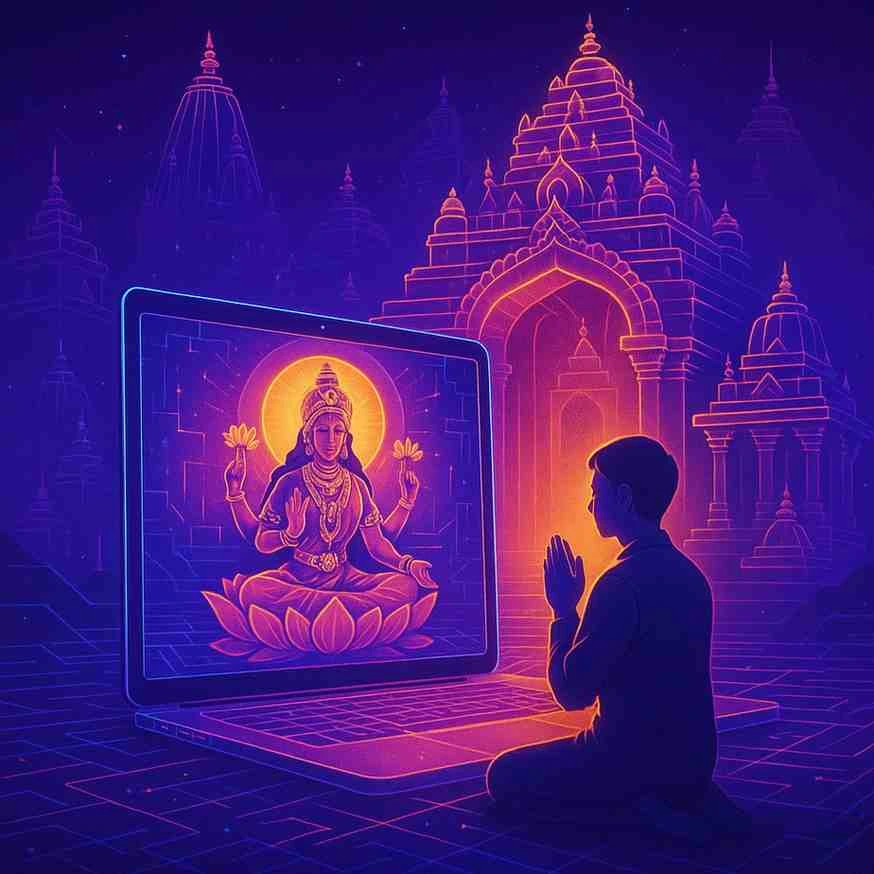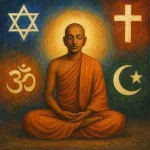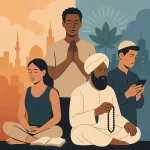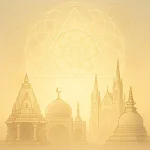Digital Temples and Online Darshans — The New Era of Devotion
In the ancient world, devotion meant walking miles to sacred temples, waiting in long queues for a glimpse of the divine, and experiencing the fragrance of incense in the air. Worship was a deeply physical, communal act — one that connected body, mind, and spirit. But in the 21st century, the landscape of faith is changing rapidly. The digital age has entered even the most sacred spaces, giving birth to digital temples and online darshans. What began as a temporary response during the COVID-19 lockdowns has now evolved into a new era of devotion — where faith travels through fiber-optic cables, and blessings can be streamed live on screens across the world.
The Rise of the Virtual Sacred
When the pandemic struck in 2020, temples, mosques, churches, and gurdwaras across the globe were forced to shut their doors. But faith, unlike physical walls, could not be locked down. Many religious institutions quickly adapted, setting up cameras inside sanctums and streaming live aartis, prayers, and rituals online. Devotees, confined to their homes, found solace in watching these darshans through their phones and televisions.
This digital shift was revolutionary. It broke geographical barriers and made sacred experiences accessible to anyone, anywhere. A devotee in New York could witness the morning aarti of Kashi Vishwanath Temple in India, while someone in Chennai could participate virtually in the Golden Temple’s evening shabad kirtan at Amritsar. The concept of devotion expanded beyond physical presence — it became global, instantaneous, and deeply personal.
Faith in the Age of Technology
Technology has long been seen as a tool of logic and progress, but its intersection with faith reveals something profound. Digital devotion does not aim to replace traditional worship — it enhances it. For those who cannot travel due to age, illness, or distance, online darshans serve as a lifeline of spiritual connection.
Temples have begun creating immersive 3D experiences, allowing devotees to take virtual tours as if they were walking through the temple corridors themselves. Mobile apps now offer daily prayers, live pujas, personalized astrology, and even the ability to book rituals online. The idea of darshan — seeing and being seen by the divine — has transformed into a new digital form of spiritual intimacy.
A New Kind of Community
Faith has always been about connection — not just with God, but with others. The digital era has given rise to online spiritual communities that gather virtually for meditation, chanting, and satsangs. Platforms like YouTube, Facebook Live, and Instagram have become modern-day prayer halls where millions join in simultaneous devotion.
During festivals like Navratri, Ganesh Chaturthi, and Diwali, temples broadcast rituals that attract global audiences. Virtual pilgrimages, interactive chats with priests, and live Q&A sessions about scripture have made spiritual learning more participatory than ever. The once passive devotee has now become an active participant in digital faith.
The Democratization of the Divine
One of the most powerful outcomes of digital devotion is inclusivity. In the physical world, social hierarchies or economic barriers can sometimes limit access to sacred spaces. But online, everyone stands equal before the divine. There are no front rows or back rows, no special privileges or restrictions. The divine becomes truly accessible — anytime, anywhere, to anyone with an internet connection.
This democratization of spirituality reflects a deeper truth: the sacred cannot be confined. Whether one stands in a crowded temple or sits quietly before a glowing screen, what matters is sincerity of heart. The medium may change, but the message remains the same — devotion transcends form.
Challenges of the Digital Devotion Era
Yet, this transformation is not without its challenges. Critics argue that online darshans risk turning spirituality into mere convenience. When devotion becomes just another click or scroll, can it still retain its depth? The sensory and emotional experience of being physically present — hearing bells ring, feeling the sacred energy, smelling flowers and incense — cannot be replicated on a screen.
There is also the issue of commercialization. Some digital platforms have begun to monetize faith, offering “premium darshans” or paid blessings. This raises ethical questions about whether devotion is being commodified in the name of technology. Moreover, excessive reliance on digital worship may reduce the discipline and commitment that traditional rituals once required.
Bridging the Physical and the Digital
Despite these concerns, many spiritual leaders believe that technology, if used wisely, can deepen faith rather than dilute it. The digital world, they say, is merely a modern extension of the ancient principle of seva — serving others through connection and accessibility. Just as printed books once made scriptures available to all, digital temples make divine experiences universal.
Some temples are now blending both worlds — offering hybrid experiences where devotees can attend in person or join online. Priests perform live-streamed ceremonies while also interacting virtually with followers. This hybrid model ensures that while technology connects hearts across distances, tradition continues to ground the experience in authenticity.
The Future of Worship
As artificial intelligence, virtual reality, and metaverse technology advance, the future of digital spirituality seems limitless. We may soon see virtual temples where devotees across continents gather as avatars to offer prayers, or holographic priests conducting rituals in multiple languages. What once seemed unimaginable is quickly becoming reality.
But no matter how advanced the tools become, the essence of devotion will remain timeless. Faith does not depend on location, screen, or structure — it lives in the heart of the devotee.
The Eternal Connection
Digital temples and online darshans represent more than a technological trend; they symbolize the adaptability of the human spirit. Faith has always evolved with time — from oral traditions to written scriptures, from stone temples to streaming platforms. The divine, it seems, flows effortlessly through every medium that humans create.
In this new era of devotion, the boundaries between the physical and digital blur, but the essence of bhakti — love, surrender, and connection — shines brighter than ever. Whether one bows before an idol in a temple or joins a live-streamed aarti on a phone, the heart knows no difference. For where there is sincerity, there the divine is present — both in pixels and in prayer.
~Religion World Bureau









